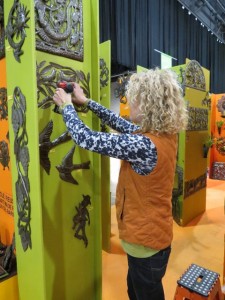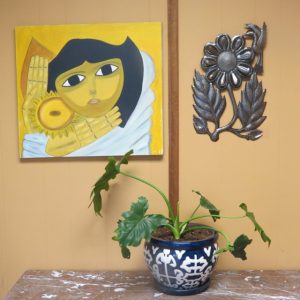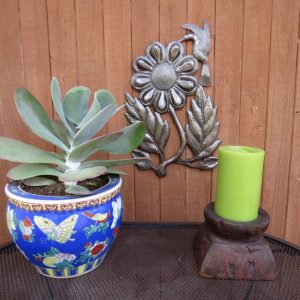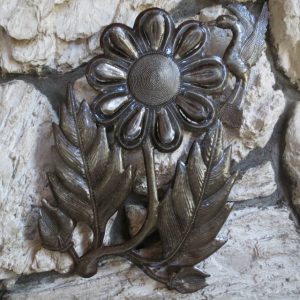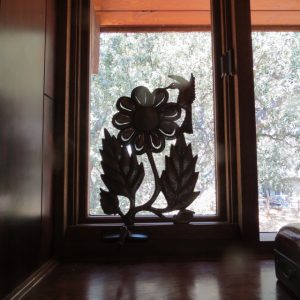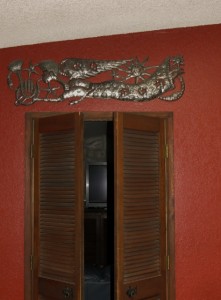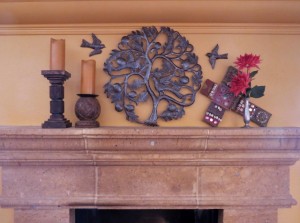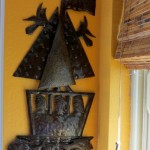July 9, 2015
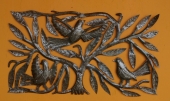
A primitive sculpture, such as this “Tree of Hope” by Jean Carlo Brutus is a surprisingly versatile decorative piece.
Not infrequently, I have heard comments from customers to the effect that, while they like the concept of recycled metal art, and they like that it is completely handcrafted, and that they appreciate the culture from which it originates, they are concerned that it won’t “fit” into their decorative style. I get that. Not all art that I admire “fits” in my home either. But my response, though it may sound like a blatant sales pitch, comes from a true heart: “There are so many styles and themes within this art form, I bet you can find something that fits perfectly.”
Shall we assume that Haitian metal works well in a “Caribbean” style, since that’s where it comes from? And shall we also assume “Folk Art Funk” and “Ecletic” are fairly obvious “fits” as well? In a recent blog post “Create Your Own Peacock Room,” I talked about how peacocks were used as a decorative motif for a room filled to the brim with Chinese antiques and suggested that our exquisitely detailed Haitian metal peacocks could assume a role within Asian style . Maybe a little unexpectedly, but surprise, surprise – it works! Okay, so there’s four. What else? Shall we go with another style that’s not exactly obvious? How about “American Traditional”?
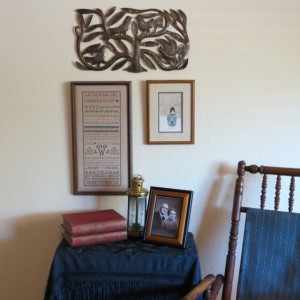
Haitian metal can be a beautiful “fit” in an American Traditional decorative style.
Many of our sculptures are done with primative lines, not unlike those you might associate with quilt patterns, needlepoint canvases, and Shaker furniture. So yes, they are works of Haitian origin, but their inherent simplicity is well-suited to the “American Traditional” style. So, for example, consider this piece above (REC132 Tree of Hope) The sculpture is nicely executed, possessing fine detail without being ornate. The birds in the tree are universal design elements, easily translatable.
Now consider this same sculpture in an American Traditional setting. (See photo, right) The sculpture is complimentary to the total look, in sync with the spindle rocker, the cross-stitched sampler, the stacked books, the Amish print, and the black and white family photo. The colors are subtle, the sizes are proportionate, the design elements are cohesive, the theme works, and the folk art aspect they share bind them together as a grouping.
How about that! Shall we go for five decorative styles? Six? (I think we can!)
Contributed by Linda for It’s Cactus

